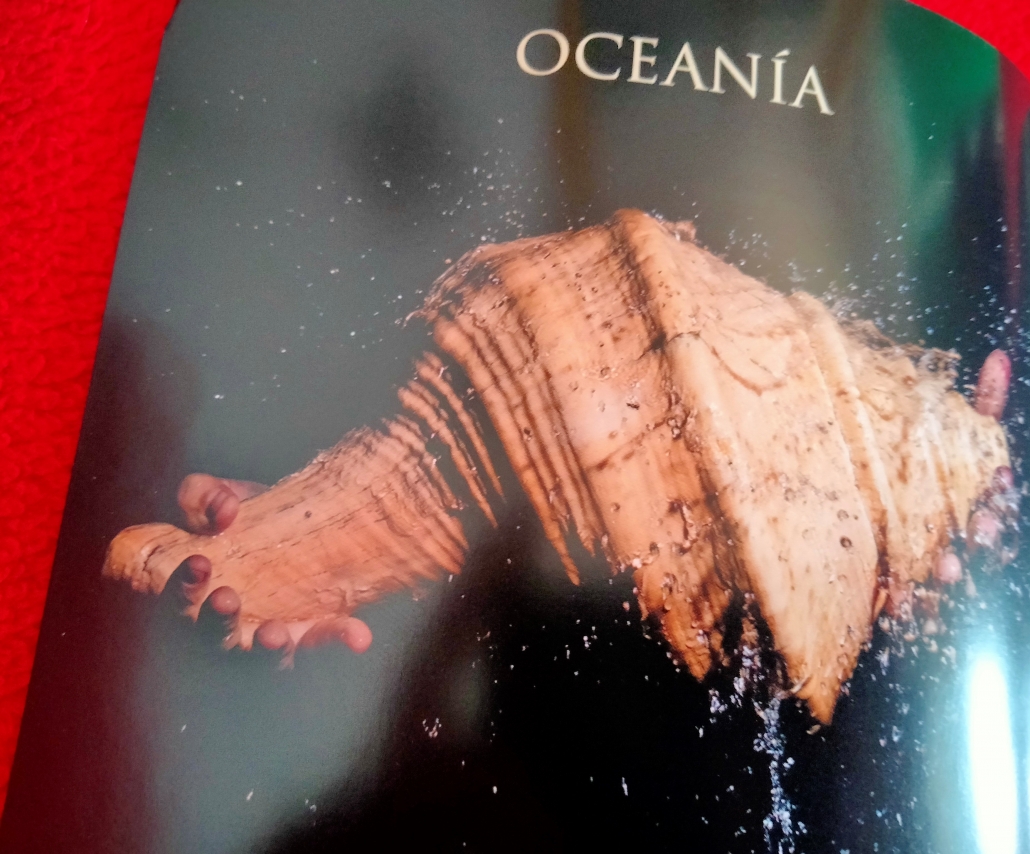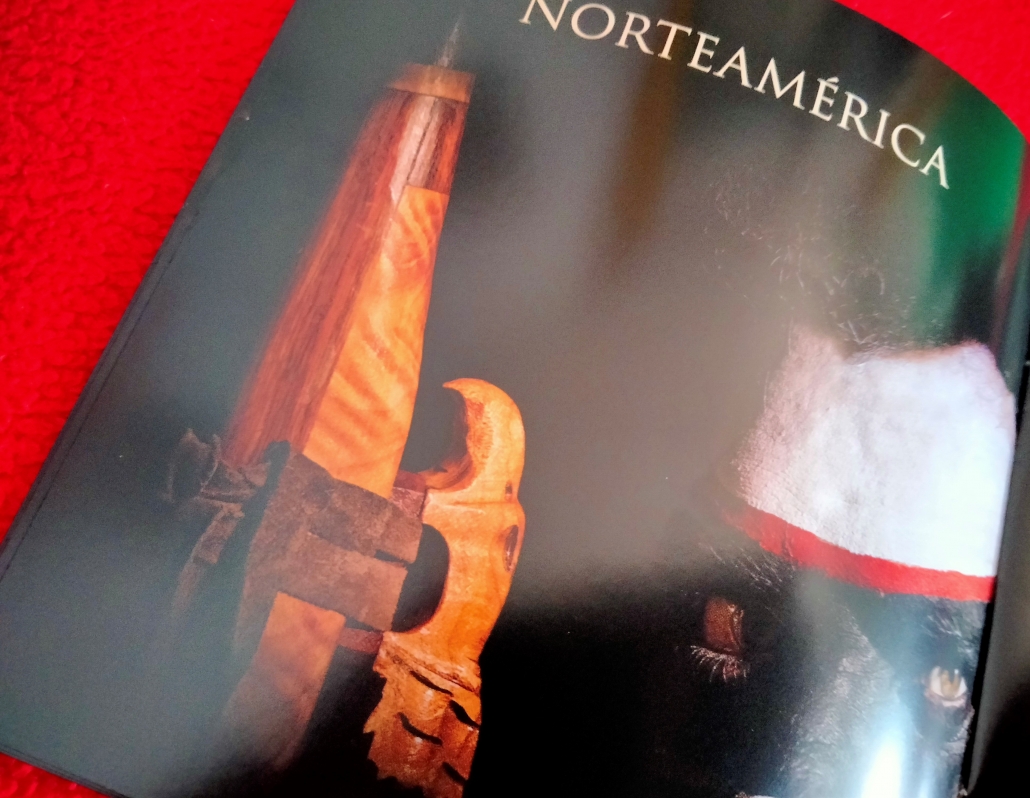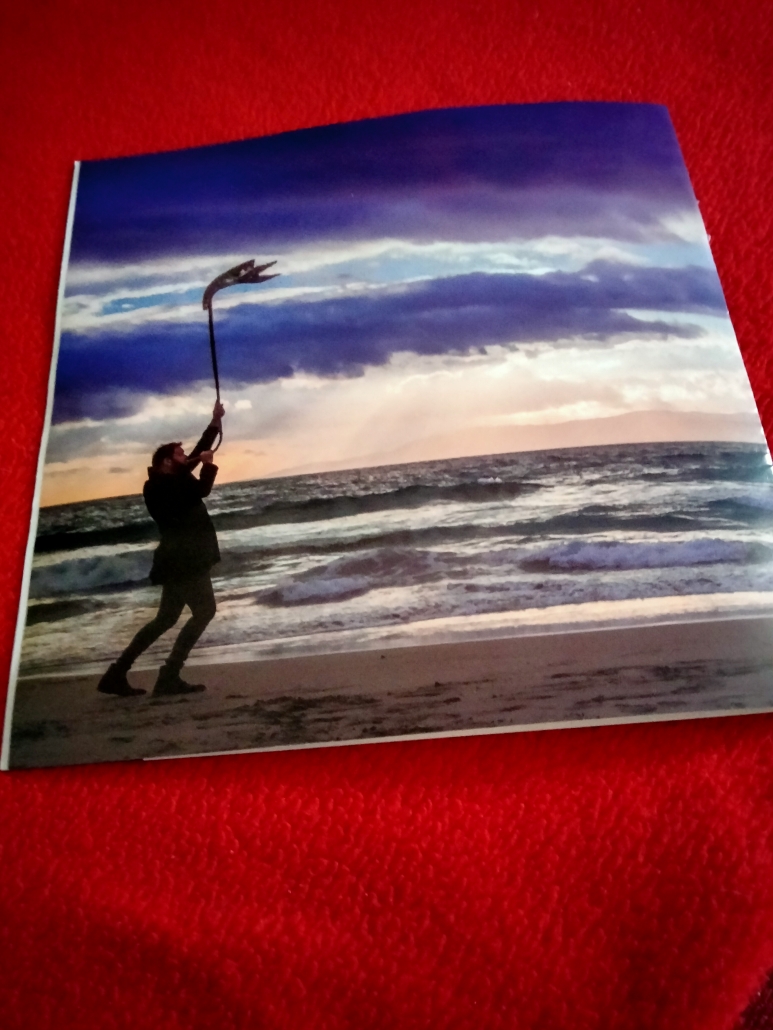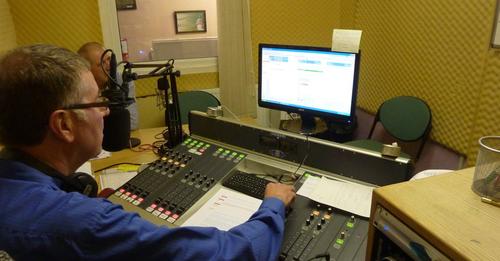PANGEA
PANGEO
created and performed by Abram Cupeiro
with the Orqusta Sinfonica de Las Palmas
Teatro El Salinero, Arrecife, Lanzarote,
38th Festival Internacional de Music des Canarias
Friday 28th January 2022
review by Norman Warwick

Abraham Cubeiro is best described, perhaps, as a skilful instrument builder and a multi-instrumentalist. He is mostly known for re-introducing long-lost instruments and forgotten sounds into today´s music, especially into the world of classical music, He enjoys playing them to create new sonorities, often using them in pieces far removed from their natural musical surroundings. He graduated from the real Conservatorio Superior in Madrid, as a trumpet player and moved on to Barcelona for further studies, and he there completed a Master´s Degree for Interpretation of Early Music.
Notwithstanding his specialist training he has always loved music of any kind. At an early age he became a fully-fledged member of all sorts of music clubs including, folk and jazz and also began playing in a number of early music ensembles.
Abraham is one of the few people in the world who can play the celtic trumpet from the iron-age, known as the Karnyx, only one of which has ever been found intact (in 2004).
He also acts as an ambassador for an ancient Galicain instrument known as a corna, which is a translation from cow-horn. Apparently his own grandfather used to play that traditional instrument which can be traced back as far as those seen in the illustration on the books of Alfonso X of Castilla.
Cupeiro´s genuine passions for instruments led him to create a collection of over 200 instruments from different temporal and spatial locations. Under the title of Ringing In The Past, Abraham frequently gives talks and concerts as a monologue of his own design.
He not only finds old instruments but also builds new ones in their style, playing all sorts of creations in all sorts of ensembles while very much enjoying the way they complement more modern instruments and sounds.
Some of his instruments can be found on Compromiscuo, a CD released with Bellarussian accordionist Vadzim Yukhnevich. An important role for the Karnyx is also to be heard in Concierto Misterio, by Wladimir Rosinsky. The work was premiered by the Galician Symphony Orchestra and the karnyx part was tailored and written to bring out Cupeiro’s special skills on the instrument.
Os sons esquecidos (Forgotten Sounds) is a very personal project, recorded with Filharmonía de Galicia and released in 2018 by Warner Classics.
This project has been played with many orchestras on Spain and Finland.
On November 2019 he recorded a new personal project: PANGEA, with Royal Philharmonic Orchestra of London at Abbey Road Studios.
To perform live from this album tonight he had invited Los Palmos Symphony Orchestra to join, who are themselves an orchestra with a high reputation and vibrant recent history.
´The second stage´ of the Las Palmas Symphony Orchestra (OSLP) began on May 29, 1999. Since then, this association of musicians has alternated its program of symphonic concerts with performances for Amigos Canarios de la Zarzuela, Amigos Canarios de la Ópera, Teatro Cuyás , Hon. Las Palmas de Gran Canaria City Council, the Canary Islands Music Festival, the Gran Canaria Philharmonic Orchestra Foundation or the Alfredo Kraus Auditorium.
This activity carried out in recent years has enabled young musicians from Gran Canaria to acquire significant orchestral experience working with conductors such as Guido Ajmon-Marsan, Patrick Baton, José Brito, José María Damunt, Ricardo Frizza, Monserrat Font Marco, Ignacio García Vidal, José Luis Gómez, Gregorio Gutiérrez, Francesc Llongueres, Dolores Marco, Juan José Ocón, Miquel Ortega, Pascual Osa or Miguel Roa.
Within the symphonic activity, the OSLP has accompanied soloists such as Celso Albelo, Jorge de León, Francisco Corujo, Judith Pezoa, Lucas Alemán, Juan Pablo Alemán, Radovan Cavallin, Francisco Martínez Ramos, Salvador Mir, Sergio Marrero or Víctor Parra.
With more than 18 years of experience in concert management, the Las Palmas Symphony Orchestra always offers the highest quality in its concerts, always supporting and including local talent, counting among its musicians professionals with national and international experience
Among its many projects, the Popular New Year’s Concert has become an unavoidable annual event, selling out all seats and repeating up to 3 performances at the Alfredo Kraus Auditorium. One aspect to highlight in this project is the production of a Participatory Choir with nearly 100 components that makes the concert itself much more spectacular and close
.The Las Palmas Symphony Orchestra has a grant from the Ministry of Culture and Historical Heritage of the Cabildo de Gran Canaria and is also a non-profit organization that fights for the recognition and rights of musicians in the Canary Islands.
Since last March 2017, it has become the resident orchestra of the Cruce de Culturas Theater in Cruce de Arinaga (Agüimes) and has appointed Mr. Rafael Sánchez Araña as its main conductor.
Tonight, and throughout the series of concerts 38th annual event in the series of the Interational Music Festival, Arana will lead OSLP through performances with Abraham Cupeiro to deliver live the sounds of his album. Pangea.
In 1910 the German meteorologist Alfred Wegener, noticed when examining an atlas that the silhouettes of the continents seemed to marry each other; It was from this observation that he began to collect data that he later captured in his book “The Origin of the Continents and the Oceans”
In it, he argued that about 300 million years ago the world consisted of a single continent, Pangea, which in Greek means “all the earth.”
For biology this theory explains the relationship between species of continents separated by oceans. For geology, it justifies the presence of similar geological formats on different continents.
The earth is the element in which we humans live, but perhaps it is the oceans that mark the climate, sometimes the orography, and also the character of its people.
With this work we want to metaphorically unite the earth through music, since it is a vital necessity that we unite to stop the destruction of our planet.
This new union would not be possible without a third element: air. Without him the sound of the instruments could not navigate through space to reach our ears.
These instruments are joined by other more humble ones that evoke cultures and landscapes to which we want to transport yowould tonight be transported. the music with beautiful sound from the depths of the earth and from the depths of the oceans!!
2OO million years ago all the drylands on Earth were in one piece. The name of this supercontinent is Pangea. The dry-lands began slowly to grow apart, becoming gradually the continents we know nowadays.
This concert took us on a journey through the music of every continent, playing with the idea of becoming re-united through the magic of sound
The show brought our audience, here in El Salinero, closer to other cultures and sonorities and became both inspiring and enchanting..
The music was all composed by Abraham Cupeiro and María Ruiz, and with this orchestra on this stage, this concert offered such diverse elements as the echoes of Oceania’s shells, the enigmatic melismas of the Hulusi from the remote mountains of China, the great plateaus of Northern America, Southern American jungles, the Peule flute from Senegal, the Bulgarian bagpipe, the defying Zurna and the evocative sound of the millenary karnyx.
it felt as if we were imagining the ´map´´of Pangea being authentically re-created..
Within the opening few bars of this concerts any concerns we might have held about such a strange-sounding fusion had evaporated. As a lively and personable front man, Cupeiro didn´t merely play a wide range of ´old´ instruments from around the world, he created harmony and melody with an orchestra that were very obviously enjoying what was going on.

He played The Cradle Of Love on what looked to be some kind of sand encrusted, sea weed wrapped shell he´ had picked up on a beach somewhere. This relic of Oceania (right) was in fact typical of what might be found on the great barrier reef: a conch shell capable of reminding us of the incredible sounds that can be created on one such shell, whilst at the same time sounding perfectly at home millions of years after its formation and becoming just another glorious layer of sound within a modern symphony orchestra, especially in the hands of a maestro like Cupeiro who patently loves the mystery of it all.

From China we were give the The Three Friends Of Winter, referring to a trio of botanica that have become a central part of Chinese culture. In China, bamboo is a symbol of integrity, elegance, purity and modesty all of which to be found in in the glorious playing of this piece.. it was as if we were a hot air balloon floating not through time, but over time. The orchestra and Cupeiro painted beautiful melodies with their sweet and colourful sounds.

When The Wind Whistles Through The Rocks re-created the communications of a North American instrument as made and played by the Hopi people of North America,which has been preserved by them in their culture of legend of mythology. Ancient Carvings of this flute like instrument can be found carved on the walls of many caves in the South West area of North American.
It is further down in South America, though, Where the Rhythms Embrace. It was it this stage of the concert that I began to realise what a thorough ethno-musicologist Cupeiro must be. Fanciful? (me? really?) I was beginning to see him as an Indiana Jones of the music scene, finding and preserving and recreating old music and its instruments with same sense of amused daring that Harrison Ford shows in the character.
Abraham Cupeiro came alive with each different instrument he brandished and the next piece was entitled Invisible Home and by now I was already in love wioth not only the pieces these top-class musicians were delivering but I was also growing to love the titles Cupeiro bestowed on this music of his own creation. The next piece played on the xxx from Africa was called invisible Home and that, like all his titles, was absolutely evocative, carrying not only long-distant memories of early man but also of Paul Simon´s modern notions of noadic tribalism of the continent on his Gracelands album of xx.
A strangely self-contradictory title of The Sea of Sand saw Abraham playing music from Arabia on the strange looking zurna, an instrument that long ago was used to call nomads at their camp fires to dance.
And perhaps that element of dance is what made this classical concert so unique. There was what can only be described as dancability in all the elements played tonight. I don´t mean formal ballroom, or ´strictly´ or disco dance music, I mean the kind of dance that is simply human compulsion to move to the rhythm.

Among other instruments we would see Culpeiro play was one of particular interest to me. The xxxx looked, as he wrapped it around himself, at first like a set of Scottish bag-pipes, and then on second look more like The uilleann pipes are the characteristic national bagpipe of Ireland. Earlier known in English as “union pipes”, their current name is a partial translation of the Irish language terms píobaí uilleann, from their method of inflation.
Pipes such as these are usually overwhelming of other instruments iu concert settings but this set, peculiar to Bulgaria were used to engage with and enhance what was being played by The orquesta Sinfonica de las Palmas.

Cupeiro and the OSLP closed the concert with him moving around the musicians playing this strange-looking instrument (right) which Iain has referred to ever since as a ´a halibut on a stick´ but nevertheless the instrument and the orchestra created the same emotions of distance and time as does the accompanying photograph included here.
A long standing ovation brought the artistes back to the stage to close on a suitably uplifting piece.
We had tonight heard music, his symphony number 5, composed by Irving Berlin. The Russian American composer and lyricist is widely considered one of the greatest songwriters in history. His music forms a huge part of the Great American Songbook.
We also heard, the lovely Danzes Rumanas a selection from the works of Bela Bartok. a Hungarian composer, pianist, and ethnomusicologist. He is considered one of the most important composers of the 20th century; he and Franz Liszt are regarded as the country´s greatest composers.
Not only did we enjoy the music of Berlin and Bartok, but we also heard work, too, from Astor Piazolla, the Argentian twentieth century composer who died in 1992 having done so much for modern classical music. Iain and i have long debated whether what we call modern classical will endure and thrive as long as has older classical music. The work of Piazolla is a superb reminder that there is no need to consider modern classical music as any kind of poor realtion.
We also heard these extraordinary compositiions from Cupeiro himself, which were inserted with so much fun and vigour, whilst at the same time somehow stepping unobtrusively in to the itinerary of this wonderful journey back to the beginning of the relationship between Mankind and music.
On Pangea, Cupeiro´s latest recording, and in this concert, , instruments from past times were mixed with a modern orchestra, removing them from the context for which they were conceived:
Popular music is also represented with instruments collected in their countries of origin. The Romanian Dances of Bartok reunite in this project the original protagonists from which they came out for the first time.
Music and instruments such as the tango and the cornetto, separated in time, are coupled in such a natural way that they seem to have been conceived at the same time.
It is my job as music journalist to praise great music and identify excellent musicians and composers. It is always a pleasure to do so, but tonight was simply a labour of love. This was a journey to where the sky meets the edfge of the world, and on the way we heard music that seemed modern and familiar and yet at the same time rooted in those days when Man first made music.
Thanks to everyone for giving us not only the concert of a lifetime but also the concert of music´s lifetime !

Meanwhile, for those of you who include jazz in your weekly diet of music, the broadcast this week of Hot Biscuits jazz show features live recordings of the Munch Manship Quartet. Munch on Tenor saxes, Richard Wetherall on piano, Ed Harrison on Bass and Eryl Roberts on drums. Recorded for broadcast at the Creative Space. The show, presented by Steve Bewick (left) and his sidekick, Gary, also includes a selection of new CD’s, including Stephen Godsall, with a new and exciting sound. If this sounds interesting share the word and tune in 24/7 for Steve´s new weekly shows starting Mondays at www.mixcloud.com/stevebewick/




Leave a Reply
Want to join the discussion?Feel free to contribute!